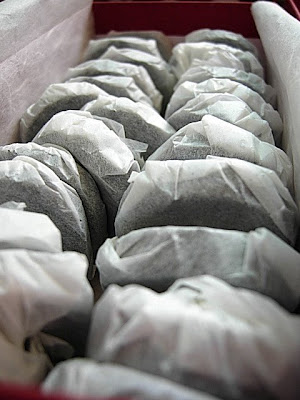
This tea is from an unspecified area of Japan. The shining tin claims that the matcha comes from very old organic tea bushes. This tea is most popular with the local monks making the trip into town. One was a bit curious why this inexpensive and lower quality matcha was so popular with these meditating monks.

One opens this double sealed, simple silver tin revealing a dark green powder. Stirred from its slumber, some small particles float out of the tin like fragrant smoke out of lit incense. The plume fills ones nostrils with a deep, rich, almond smell, with a lingering sweetness.

One prepares this matcha with the same reverence that one would afford the top grade matcha. It is smoothly whipped into a frothing, heady liquid, and consumed.
Tea trailing down the throat and into the stomach before radiating outward, this tea is good. Its taste is rich, smoky, a bit roasted with very little sweetness yet very little bitterness- perhaps a perfect trade off for flavour, which this tea is filled with.

It leaves a thick chalk on ones tongue as its unpretentious flavour and mouthfeel gives way to a touch of kind bitterness.
The energy is a bit strong on the stomach and lower internals, it lightens the head, clearing the mind. After drinking this tea with a headache the headache slowly slips into nothingness.
Peace









































